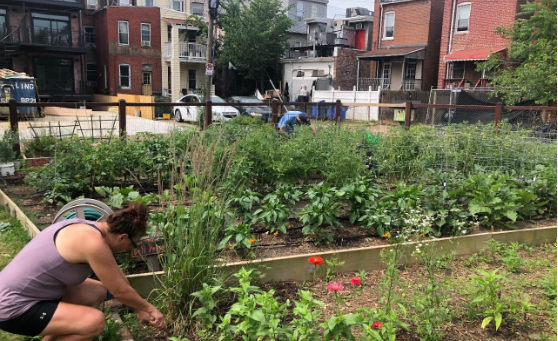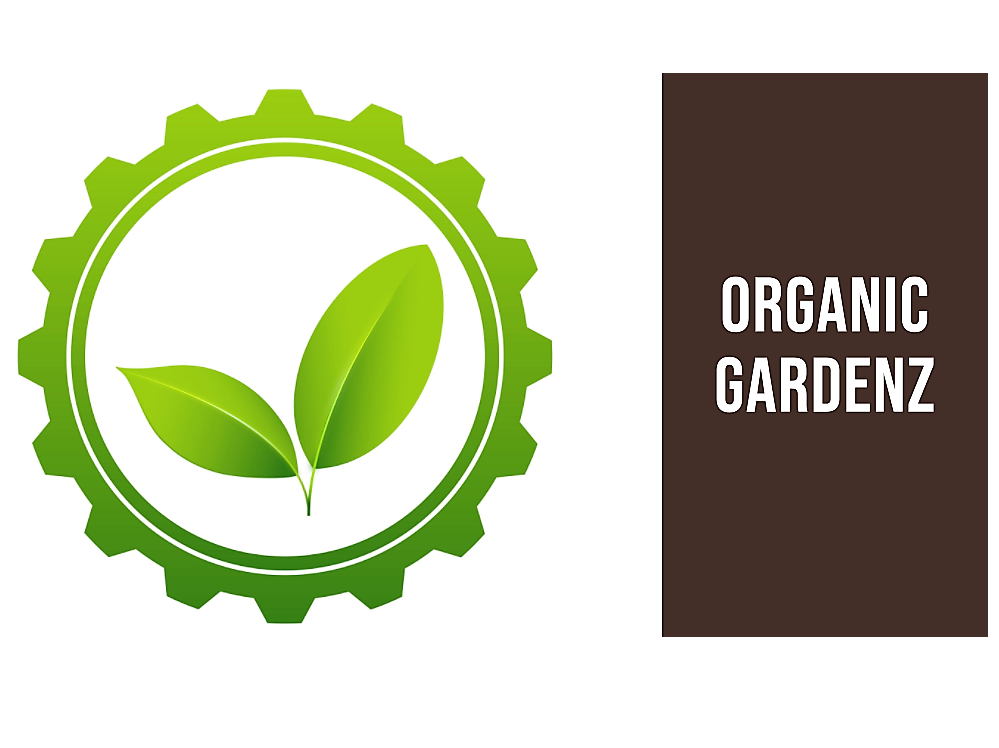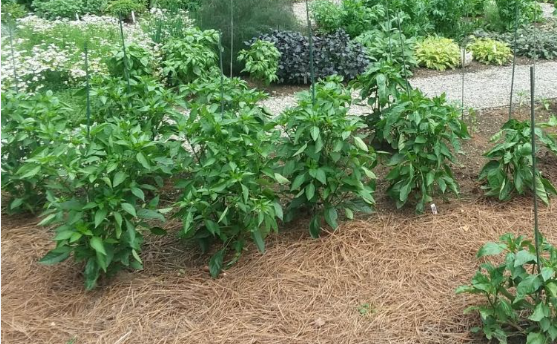Gardening Practices
Gardening is more than just a hobby. It is a lifestyle that can bring one closer to nature and provide numerous benefits for the body, mind, and soul.
Gardening practices encompass everything from planting to maintenance, harvesting, and pest control. They are essential if you want to create a healthy garden that not only looks beautiful but also yields high-quality produce.
Definition of Gardening Practices
Gardening practices refer to the set of techniques used in the cultivation of plants, whether for aesthetic or agricultural purposes. These techniques involve different activities such as soil preparation, planting seeds or seedlings, fertilization, watering, pruning, and pest control.
The goal of gardening practices is to promote healthy growth and maximize yield while minimizing damage or loss caused by pests or disease. In essence, gardening practices include all the steps necessary for creating a successful garden that produces healthy plants and crops while being eco-friendly and sustainable.
Importance of Gardening Practices
Good gardening practices are important not only for creating an aesthetically pleasing garden but also for promoting environmental sustainability. With global warming on the rise and natural habitats under threat from urbanization and industrialization processes worldwide, having green spaces becomes even more critical.
Additionally, implementing good gardening practices can provide numerous benefits for your health as well. Studies have shown that spending time outside in green spaces can reduce stress levels while boosting creativity and cognitive function.
Brief Overview of Different Types of Gardening Practices
There are many different types of gardening practices available today depending on climate conditions, growing preferences or space limitations among other factors. Some common types include organic gardening which shuns synthetic fertilizers or pesticides; hydroponic gardening which uses nutrient-rich water instead of soil; companion planting which involves planting different crops together to enhance their growth, and raised bed gardening which is perfect for small spaces. By understanding the different types of gardening practices available and choosing one that works best for you, you can create a healthy and sustainable garden space that not only looks beautiful but also produces high-quality produce.
High-Level Overview of Gardening Practices

Organic Gardening: A Natural Approach to Growing Plants
Organic gardening involves the use of natural methods to grow plants, without the use of synthetic fertilizers and pesticides. This method promotes healthy soil by using compost, mulch, and cover crops instead of chemical fertilizers. Organic gardeners also focus on companion planting to deter pests and attract beneficial insects.
Additionally, they encourage the use of beneficial microbes that are naturally present in the soil to promote plant growth. The benefits of organic gardening include producing healthier and more nutritious produce that is free from harmful chemicals.
Organic gardening also promotes biodiversity as it encourages a diverse range of insects and wildlife into the garden. When done correctly, organic gardening can be as productive as conventional methods while being environmentally friendly.
Container Gardening: Growing Plants in Small Spaces
Container gardening is a method used for growing plants in small spaces or areas where there is limited access to soil. This method involves planting in pots, troughs or baskets which can be placed on balconies, patios or even indoors. The benefits of container gardening include convenience and flexibility as plants can be easily moved around for optimal sunlight exposure or weather protection.
It also allows for better control over soil quality and nutrient levels which can result in healthier plants with higher yields. Container gardens are also ideal for those who want to grow their own produce but have limited space or physical capabilities.
Raised Bed Gardening: Creating Optimal Soil Conditions
Raised bed gardening involves creating a garden bed that is elevated above ground level by using materials such as wood planks or cinder blocks. This method provides better drainage and prevents soil compaction while allowing gardeners to create custom soil blends containing optimal nutrient levels.
Benefits of raised bed gardens include easier access for those with mobility issues, less bending and kneeling required, and better control over the soil quality. Raised bed gardens are also ideal for areas with poor soil conditions, as gardeners can create their own custom soil blends that provide optimal growing conditions for plants.
Hydroponic Gardening: Growing Plants Without Soil
Hydroponic gardening is a method of growing plants without soil in a nutrient-rich water solution. This method uses a variety of systems such as deep water culture, nutrient film technique, and aeroponic systems to grow plants.
Hydroponic systems can be used indoors or outdoors, making them ideal for urban gardening. The benefits of hydroponic gardening include faster growth rates, higher yields, and less water usage compared to conventional methods.
It also allows gardeners to grow a wider variety of plants all year round regardless of climate or season. Hydroponic growing is an excellent way to produce fresh produce with minimal space usage while providing an efficient use of resources.
Companion Planting
Companion planting is a method of planting different crops together for mutual benefits. It involves planting specific plants next to each other that benefit each other in some way. For example, planting beans next to corn can help provide nitrogen to the soil which helps the corn grow better and faster.
Conversely, corn provides support for beans growing vertically. Companion planting can also be used to deter pests or attract beneficial insects.
One example of companion planting is the Three Sisters technique used by Native Americans. This involved growing corn, beans, and squash together in a symbiotic relationship.
The corn provides support for the climbing beans while the beans provide nitrogen for the soil through their root nodules. The squash grows between them and acts as a natural mulch with its large leaves, helping to retain moisture in the soil and suppress weed growth.
Crop Rotation
Crop rotation involves changing the type of crop grown in a certain area from year to year in order to maintain healthy soil and prevent disease. Rotating crops helps reduce pest populations because pests that attack one type of crop will not find it if it is not planted in that area again for several years.
For example, if you plant tomatoes one year, you should not plant them in that same spot for at least three years because they are susceptible to many diseases such as early blight and verticillium wilt. Instead, you could plant a different type of crop such as beans or cucumbers which do not share similar diseases with tomatoes.
Soil Preparation and Fertilization
Proper soil preparation is essential for successful gardening practices; it ensures that plants have access to necessary nutrients while also supporting healthy root growth and water retention. Before planting anything new in your garden bed, it’s important to remove any weeds or debris present on top of the soil surface using either your hands or a hoe. Fertilization can be done using either organic or chemical fertilizers.
Organic fertilizer, such as compost and animal manure, is preferred by many gardeners because it is more sustainable and better for the environment. Chemical fertilizers are faster-acting but can cause soil degradation over time if used excessively.
Pest and Disease Control
Pest and disease control are important parts of maintaining a productive garden. One of the simplest methods to reduce pest populations is to encourage beneficial insects such as ladybugs, lacewings, and praying mantises to take up residence in your garden by providing them with a habitat.
Crop rotation and companion planting can also help reduce pest populations. If you do find pests or diseases on your plants, it’s important to act quickly in order to prevent them from spreading further.
For example, if you find signs of early blight on your tomato plants, you should remove the affected leaves immediately in order to prevent the disease from spreading throughout the plant and potentially killing it. Additionally, using natural remedies such as neem oil or diatomaceous earth can help control pests without harming beneficial insects or pollinators.
Rarely Known Small Details on Gardening Practices
Seasonal Planting Guide
Understanding the planting cycles and timings is essential for yielding successful produce from your garden. Seasonal planting involves utilizing the correct plants for specific seasons, which can help improve the yield of plants. In general, it is essential to plant cool-season crops in early spring and fall while warm-season crops should be planted in late spring or early summer.
Understanding which plants grow best in each season can help you plan accordingly and ensure maximum productivity. Some examples of cool-season crops include kale, spinach, collards, broccoli, cauliflower, peas and radish.
Warm-season crops include tomatoes, cucumbers, corns peppers, eggplants and beans. It is important to note that different regions have varying climates leading to different seasonal changes; thus it is necessary to consult local gardening experts or refer to gardening manuals for more information.
Watering Techniques and Timing
Watering techniques are critical in maintaining healthy gardens as accurate watering ensures optimal growth throughout the growing season. Over-watering or under-watering can lead to disease susceptibility as well as stunted growth of plants resulting in reduced yield. Ideally, a deep soak every three days is the most effective method of watering a garden but this may vary depending on soil type and weather conditions.
During hot summer months when evaporation rates increase significantly leading to water loss from soil surfaces increase your watering frequency if needed but never over-water as this will promote the growth of molds or fungi on plants which causes them harm. It’s also wise not only to water directly at root level but around the plant too; this helps keep leaves clean by washing off any dust residues that could attract pests.
Practical Tips for Successful Harvest
Whether you are growing fruits vegetables herbs or flowers there’s nothing quite like seeing your harvest at the end of a season. To achieve the best harvest possible, it is necessary to follow essential tips to ensure that your plants thrive and provide an abundance of produce. One tip is to make sure you keep your garden clean, free from any debris or weeds.
Tending to your garden regularly ensures that you can spot problems early before they become too difficult or costly to manage. Another tip is proper pruning as it enhances productivity by allowing light and air circulation in the plant canopy which encourages healthy growth of foliage and roots.
Furthermore, fertilization should be done correctly by applying organic or chemical fertilizers at appropriate intervals depending on the plant type and growing medium used. Taking care of these small details ensures a bountiful harvest and a beautiful garden that everyone will envy!
Conclusion
Gardening is not only a rewarding hobby but an essential practice that helps to connect us with nature. Through gardening practices, we can create a beautiful and healthy environment while also providing fresh produce for ourselves and others.
In this article, we have explored the different types of gardening practices, including organic gardening, container gardening, raised bed gardening, and hydroponic gardening. We have also examined niche subtopics on companion planting, crop rotation, soil preparation and fertilization, pest and disease control.
Additionally, we highlighted some lesser-known small details such as seasonal planting guide, watering techniques and timing, practical tips for successful harvests. Incorporating good garden practice into daily life is crucial in maintaining a sustainable environment that provides for generations to come.
Summary of the Main Points Discussed in the Article
Gardening practices are essential for maintaining a sustainable environment while providing fresh produce for ourselves and others. Organic Gardening involves using natural alternatives to pesticides or fertilizers to grow crops naturally that are healthier than conventional methods of farming.
Container Gardening is perfect for those with limited space because it allows you to grow plants in pots or containers no matter where you live. Raised Bed Gardening allows you to garden without having to worry about soil quality issues because it gives you complete control over your soil health.
Hydroponic Gardening involves growing plants without using soil by using nutrient-rich water solutions instead. Niche subtopics discussed include Companion Planting which helps create a mutually beneficial relationship between two plants when planted together; Crop Rotation helps improve soil health by changing up what crops are grown on your land each year; Soil Preparation & Fertilization refers to how preparing your area before planting will result in better yields; Pest & Disease Control discusses how important it is to use natural methods rather than toxic chemicals when treating plants.
Importance of Incorporating Good Garden Practice into Daily Life
Gardening is a great way to connect with nature while also providing fresh produce for ourselves and others. Incorporating good garden practice into daily life is crucial in maintaining a sustainable environment.
By creating beautiful gardens, we are contributing to the beauty of our surroundings while also promoting a healthy ecosystem. Incorporating good garden practices such as using organic gardening methods, rotating crops, and using natural pest control methods can help promote healthy soil, reduce pollution, and contribute to a healthier environment overall.
It’s important to remember that even small changes in how we approach gardening can make a big difference in the long run. So let’s all do our part by incorporating good garden practice into our daily lives!

